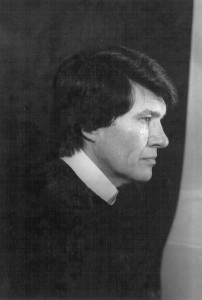
This week marked the official opening of the Multipurpose Academic Center (MPAC) at LSUA. Years in the making, the building and all of its gilding is up and running. State-of-the-art classrooms provide professors and students alike with the technology to explore many diverse subjects. I have waited 43 years for this building. When I first came to LSUA, the art department was housed in a “temporary” building that had already seen better days. And there it stayed for these many years. I now have an office that is temperature controlled with book shelves, comfortable chairs for visitors, and a brand new computer! My office adjoins my own personal studio, a perk I have never before had except at home. I can move easily from lecture hall to painting, ceramics and photography classroom studios. I guess I never realized how hard the students and I had it in the old facility until moving into MPAC.
One of the interesting things about this building is the diversity of subjects being taught within one space. In the old facility, art was totally isolated from the other disciplines. Now I share a facility with psychology classes, journalism classes and other disciplines, along with all of the arts being together. This close interaction has focused my thinking on one of the new trends in the arts. It is called Integrated Arts and has become a degree program in numerous academic institutions throughout the U.S.
Integrated Arts can be defined as the incorporation of the arts into educational, cultural and human services settings. It is an interdisciplinary program in which studio art, art research, development, production, presentation and the artistic creation of work make full use of 2 or more artistic disciplines to create works for a specific audience. Most university programs in integrated arts embrace cultural, political and economic aspects of the arts, while concentrating on a specific medium of the student’s choice. Such a degree program prepares the student to work for businesses, non-profit organizations and government agencies that deal in, represent or interact with artists and the arts. Required curricula include courses such as The Arts in Society and Technology and the Arts. Most collegiate programs concentrate on the visual and dramatic arts while leaving music to the NASM accredited Schools of Music.
Integrated arts has been used in elementary and secondary education since the 1980’s. Dr. Anna Kindler, one of the leaders in the field, spells out the reasons why the concept works. 1) There is a basic similarity between all the arts. 2) The incorporation of the arts into other subject matter areas accelerates the learning process. 3) The arts promote creativity in other areas, and 4) integrated arts is simply more economical than separate instruction in each area.
One of the first institutions to offer a degree in integrated arts was Bard College in New York. While they admit that their program is still evolving, they support the concept that “an interdisciplinary focus should be based upon a strong foundation of technique, history, and experience.” The University of Colorado at Boulder offers both undergraduate and graduate degrees in integrated art. Each course taught in the curriculum combines both lecture and studio formats. Students in the integrated arts program at the University of Vermont both live and work in an Interdisciplinary environment. Six media form the program: music, visual arts, film, theatre, dance and creative writing. The University of Baltimore entices students to the program by the byline, “If you have a passion for the arts, but think there’s no way you can make a living in the field, think again.”
The flagship program is the one at Rice University in Houston. While their program emphasizes integrated arts in the field of education, students focus on art education in one of three areas: studio art, film and theatre. The integrated arts degree program at Rice is a part of the Department of Visual and Dramatic Arts. Music is not included; Rice has an outstanding School of Music. The program seeks to link careers in art with other disciplines of study, even those outside the arts. The curriculum spans a number of disciplines, all working with an emphasis in the arts.










